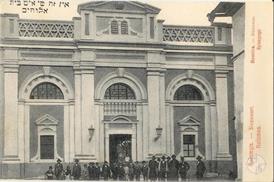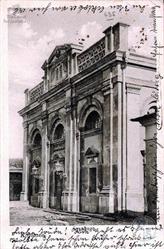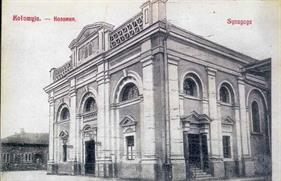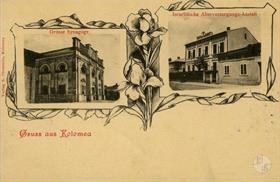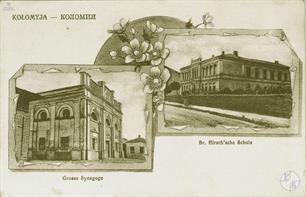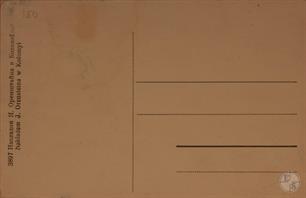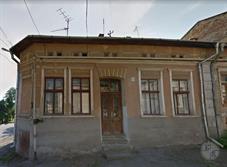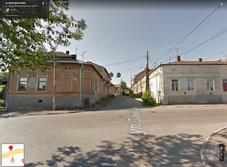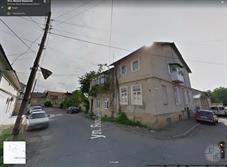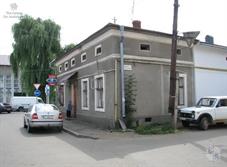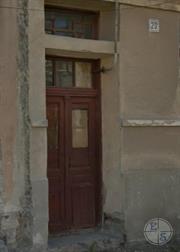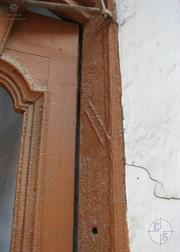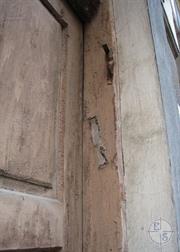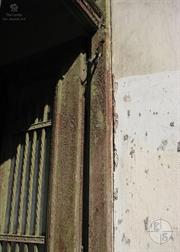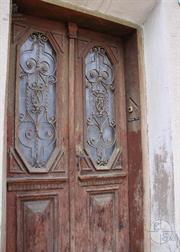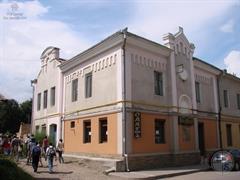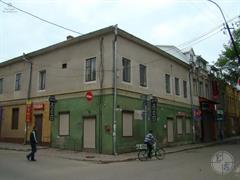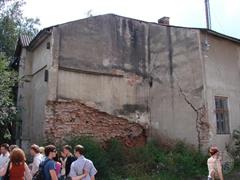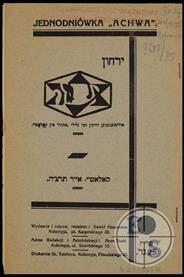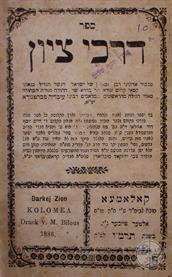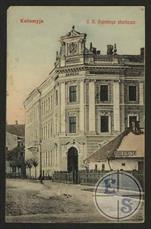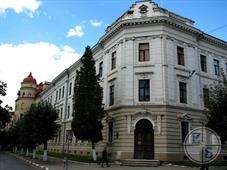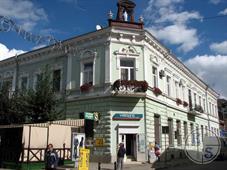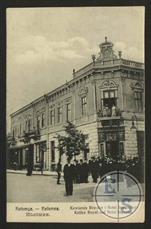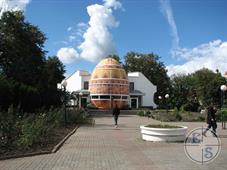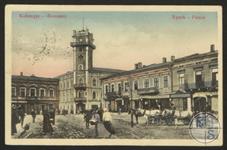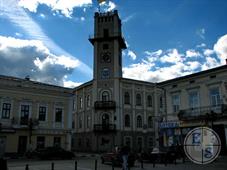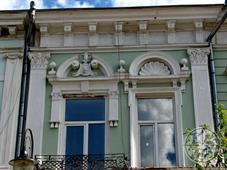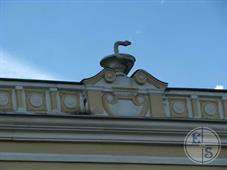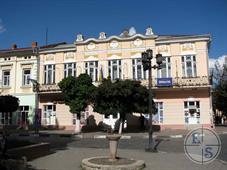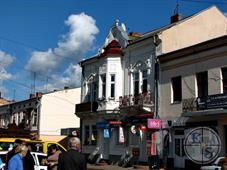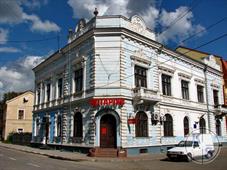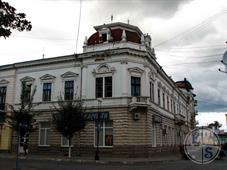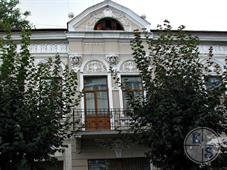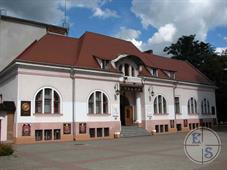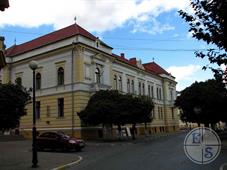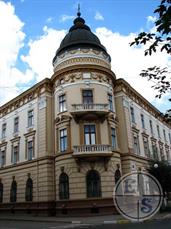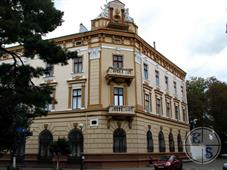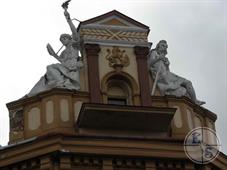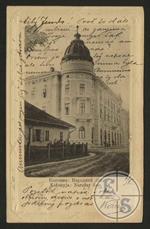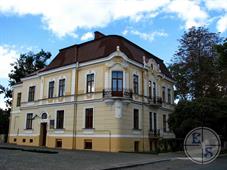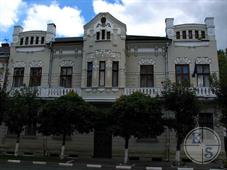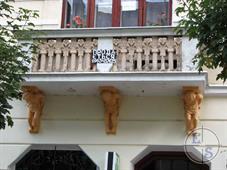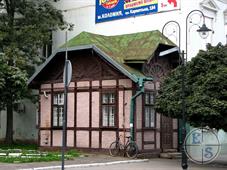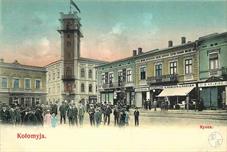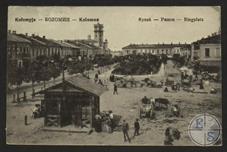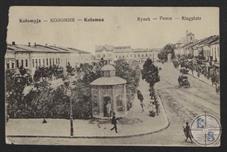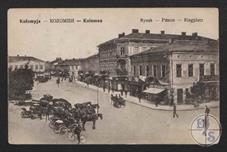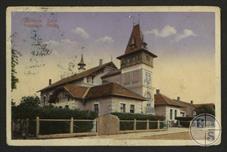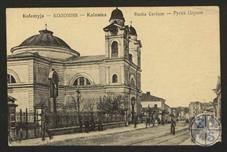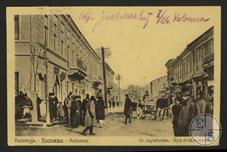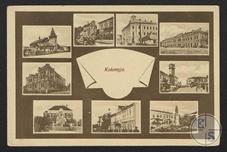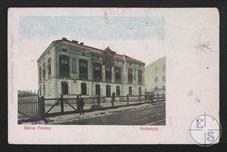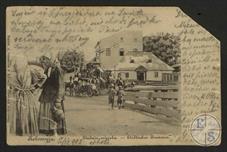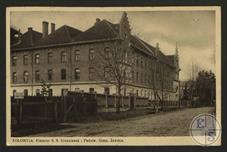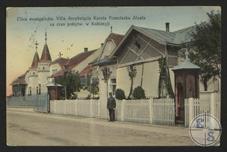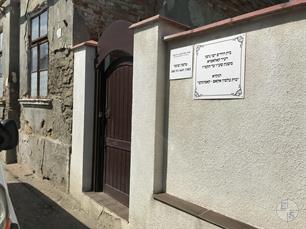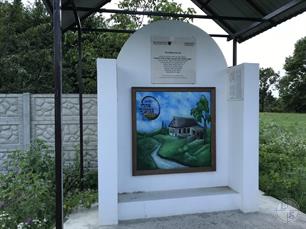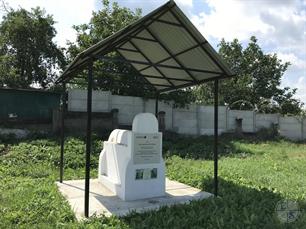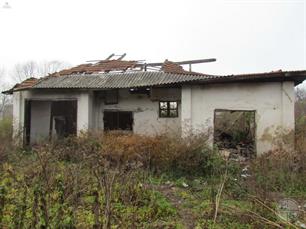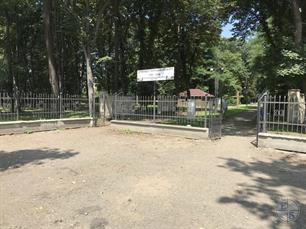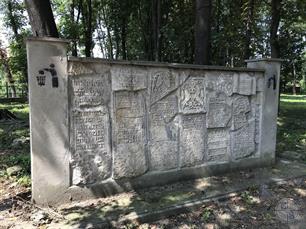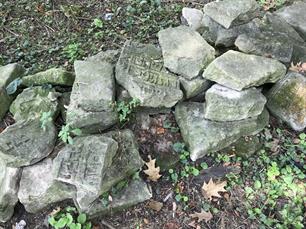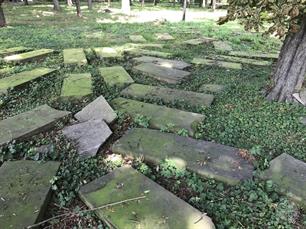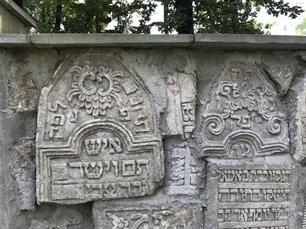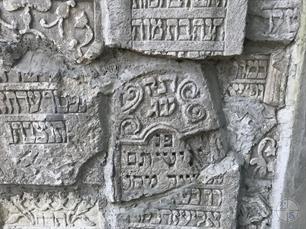Kolomyya
Sources:
- Pinkas Hakehillot Polin: Encyclopedia of Jewish Communities, Poland, Volume II, published by Yad Vashem, Jerusalem.
- Russian Jewish encyclopedia
- Jewish encyclopedia of Brockhaus & Efron
Photo:
- Eugene Shnaider
- Jewish Cemeteries Initiative. Kolomyya Old Jewish Cemetery
- Vladimir Levin, Center for Jewish art
- Biblioteka Narodowa Polona. Kolomea
- Pinkas Hakehillot Polin: Encyclopedia of Jewish Communities, Poland, Volume II, published by Yad Vashem, Jerusalem.
- Russian Jewish encyclopedia
- Jewish encyclopedia of Brockhaus & Efron
Photo:
- Eugene Shnaider
- Jewish Cemeteries Initiative. Kolomyya Old Jewish Cemetery
- Vladimir Levin, Center for Jewish art
- Biblioteka Narodowa Polona. Kolomea
Ivano-Frankivsk region
The first memories of Kolomyya date back to 1241. In the Galician-Volyn Territory, this is a center for mining and trade in it. Already in those days, German Jewish merchants took an active part in trade operations with salt. And at the end of the XV century. On the outskirts of the city, Jews from Lviv begin to settle compactly. They actively participated in trade and economic life, for which they were given royal privileges in 1569, approved by the Crown Diet in Lublin. The authorities loyal to the Jews say the following fact: after the census of the population in 1616, the Royal Commission ordered the Kolomyya headman Peter Koryitsinsky to allocate a place for the Jewish cemetery and build a synagogue, with the release of these plots from taxes.
After the destruction of the city in 1621, as a result of the raid of the Tatar Horde, Jews actively participated in its restoration. At the expense of the community, the defensive shafts of the castle mountain were partially rebuilt, for which the city authorities in 1626 cleared the letter that their rights and duties should be preserved for the Jews of the city, as well as permission to settle at the market square.
After the destruction of the city in 1621, as a result of the raid of the Tatar Horde, Jews actively participated in its restoration. At the expense of the community, the defensive shafts of the castle mountain were partially rebuilt, for which the city authorities in 1626 cleared the letter that their rights and duties should be preserved for the Jews of the city, as well as permission to settle at the market square.
In 1664, a large stone synagogue was built at the expense of the Jewish community; The Jews began to build up market houses with stone houses. The main rabbi of the city was Avroom Wolf.
In the first half of the XVIII century. The wage covers a new religious and mystical movement-Hasidism. In 1734, the founder of Hasidism Baal Shem Tov visited the Kolomyyan synagogue, talked with the main rabbi of the city and blessed this land.
From the second half of the 18th century, under the rule of the Austrian Empire, the Jews of the city were devoid of royal privileges. In 1778, the community was opened by Heder, who became the first stationary educational institution of the entire region. In 1787, with a large synagogue, Yeshiv opened.
In 1798, after restoration, a large synagogue was again opened. The rabbi of the city at that time was Hoax Efraim Fishl Ben Moishe.
In the first half of the XVIII century. The wage covers a new religious and mystical movement-Hasidism. In 1734, the founder of Hasidism Baal Shem Tov visited the Kolomyyan synagogue, talked with the main rabbi of the city and blessed this land.
From the second half of the 18th century, under the rule of the Austrian Empire, the Jews of the city were devoid of royal privileges. In 1778, the community was opened by Heder, who became the first stationary educational institution of the entire region. In 1787, with a large synagogue, Yeshiv opened.
In 1798, after restoration, a large synagogue was again opened. The rabbi of the city at that time was Hoax Efraim Fishl Ben Moishe.
Middle of the XIX - beginning of the XX centuries. can be considered a peak of economic flowering and political lifting of the community. The main incentive of such activity was the new Constitution of the Austrian Empire adopted in 1868, equalizing the Jews in rights.
According to the census, in 1869 15,000 citizens lived in Kolomyya, of which 9019 were Jews.
Since 1876, the specially created Israeli GMINA has been engaged in administrative and legal relations of the community. Famous people entered her rule: Solomon Viselberg, David Criches. And Joseph Flysenstein - the chairman of the Gmita - also entered the leadership of the magistrate and the midwife and was even repeatedly elected by the burgomaster.
At 1854, the hospital for 20 beds was opened at the expense of the community, and in 191898, Israeli Gammin opened a shelter for elderly and disabled people.
In 1872, 16 synagogues and 35 prayer houses operated in the city. The spiritual mentors of the Jews in the 19th century were the rabbis Nakhman Zev, Iskhok Seb, Iskhok Traubes, Gershon Ben Euda, Yakov-Efraim Temin.
In 1896, the Second Heder, as well as a Jewish kindergarten, was opened. Two years later, the Vienna Alliance opened the Jewish school, later patronized by the Baron Hirsch fund. In 1902, the first Jewish students joined the Ukrainian gymnasium, and since 1906, Jewish girls have been studying at the female gymnasium.
At the end of 1890, the Jewish Drama Theater acted in Kolomyya, and the performance “Brendez - Cossack from Kolomyya” was staged on his stage.
According to the census, in 1869 15,000 citizens lived in Kolomyya, of which 9019 were Jews.
Since 1876, the specially created Israeli GMINA has been engaged in administrative and legal relations of the community. Famous people entered her rule: Solomon Viselberg, David Criches. And Joseph Flysenstein - the chairman of the Gmita - also entered the leadership of the magistrate and the midwife and was even repeatedly elected by the burgomaster.
At 1854, the hospital for 20 beds was opened at the expense of the community, and in 191898, Israeli Gammin opened a shelter for elderly and disabled people.
In 1872, 16 synagogues and 35 prayer houses operated in the city. The spiritual mentors of the Jews in the 19th century were the rabbis Nakhman Zev, Iskhok Seb, Iskhok Traubes, Gershon Ben Euda, Yakov-Efraim Temin.
In 1896, the Second Heder, as well as a Jewish kindergarten, was opened. Two years later, the Vienna Alliance opened the Jewish school, later patronized by the Baron Hirsch fund. In 1902, the first Jewish students joined the Ukrainian gymnasium, and since 1906, Jewish girls have been studying at the female gymnasium.
At the end of 1890, the Jewish Drama Theater acted in Kolomyya, and the performance “Brendez - Cossack from Kolomyya” was staged on his stage.
The system of political parties of Eastern Galicia included party organizations led by Jews of the Prevention. They launched active activities in the region, fighting for places in the Reichstag-the parliament of Austria-Hungary and in local authorities, as well as protesting against anti-Semitism. The Zionist Party "Mizrahi" back in 1880 opened to the Kolomyia department; Israel Fandenchrecht was elected its chairman. Zionists began to publish the regional newspaper Israel.
In 1914, Zionist L. Traubes began to issue the annals of Volks Zeitung.
At the first World Zionist Congress in Basel in 1897, Kolomyya was represented by Solomon Singer and Rosenhekht, while only one delegate was there from Lviv. In Kolomyia, both the Orthodox Party “Agudas Isroel” and the Zionist “Poaley-Zion” were also deployed.
In 1876, the representative of the Israeli Gmina, Dr. M. Trakhtenberg, subsequently, in 1895 - 1900, former the deputy of the Reichstag, was elected in the municipal election to the burgomaster. Representatives of the Kolomyyan Jewish community O. Genigzman, I. Blokh were elected to this highest legislative body of the state, the editor of the Austrian weekly, N. Seynf lane. In the Galician Sejm by deputies from Kolomyya, L. Dube, M. Landsberger, and the same O. Genigzman.
In 1914, Zionist L. Traubes began to issue the annals of Volks Zeitung.
At the first World Zionist Congress in Basel in 1897, Kolomyya was represented by Solomon Singer and Rosenhekht, while only one delegate was there from Lviv. In Kolomyia, both the Orthodox Party “Agudas Isroel” and the Zionist “Poaley-Zion” were also deployed.
In 1876, the representative of the Israeli Gmina, Dr. M. Trakhtenberg, subsequently, in 1895 - 1900, former the deputy of the Reichstag, was elected in the municipal election to the burgomaster. Representatives of the Kolomyyan Jewish community O. Genigzman, I. Blokh were elected to this highest legislative body of the state, the editor of the Austrian weekly, N. Seynf lane. In the Galician Sejm by deputies from Kolomyya, L. Dube, M. Landsberger, and the same O. Genigzman.
The opening of a railway message between Lviv and Chernivtsi in 1865 with a nodal station in Kolomyia stimulated the rapid development of the city’s economy: craft artisanal workshops are transformed into industrial enterprises, almost all of Jews.
In 1870, the weaving factory of Jonash Sager - one of the largest manufacturers of Tales in Europe: they were exported to Hungary, Germany, France, England, Romania and even to America.
In 1880, the factory of Geger Kalman for the production of brushes gave the first products - they were delivered to Western European countries. The factory "Geller Samson and Sons" produced woolen costume fabrics, rugs, as well as finished Tales, in 1889 up to 150 workers worked on it.
The most powerful in the region were factories for the production of bricks and ceramic products "Ramler and son -in -law". Large enterprises of the food industry were the breweries of Yakub Bretter: there in 1913 32,600 gallons were produced there, and the competitor - Stephen Vayes - 30,000 gallons.
The mills of Yakub Baydaff, Yakub Bretter, Moizes Gartenberg, Marek Shillyakh, 60,000 centners of the flour, which went to Germany, was prayed annually.
In 1879, oil mines at the village of Sloboda give the first oil. The Jews Geller, Berko participate in their development, and in 1885 in the suburbs of Kolomyya, Sopov, the oil refinery of the Oangel family earned.
Publishing role in the development of Ukrainian national culture was played by the publishing enterprises of Kolomyya, headed by Jews Wilhelm Browner and Yakub Orenstein.
From 1903 to 1939, their printing houses were published by the Ukrainian weekly “Zas”, the annals for the people “Clates Pravda”, the body of Ukrainian-Russian teaching “Popropor”, the political chronicle “Right of the people”, the rural weekly “plow”, the journal of young literature “Mirror” . They published the books of the classics T. Shevchenko, I. Franko, I. Nechui-Levitsky, Marco Vovchok, P. Kulisha, L. Tolstoy, L. Andreev, A. France, Bernard Show ...
At the turn of the century in 1900, 34,188 people lived in Kolomyya, and 16,868 of them were a little less than half - there were Jews. In 1906, on the way to Geneva, the city visited Sholom-Aleichem and described the life of the Jewish there in the story “Lyran”.
In 1870, the weaving factory of Jonash Sager - one of the largest manufacturers of Tales in Europe: they were exported to Hungary, Germany, France, England, Romania and even to America.
In 1880, the factory of Geger Kalman for the production of brushes gave the first products - they were delivered to Western European countries. The factory "Geller Samson and Sons" produced woolen costume fabrics, rugs, as well as finished Tales, in 1889 up to 150 workers worked on it.
The most powerful in the region were factories for the production of bricks and ceramic products "Ramler and son -in -law". Large enterprises of the food industry were the breweries of Yakub Bretter: there in 1913 32,600 gallons were produced there, and the competitor - Stephen Vayes - 30,000 gallons.
The mills of Yakub Baydaff, Yakub Bretter, Moizes Gartenberg, Marek Shillyakh, 60,000 centners of the flour, which went to Germany, was prayed annually.
In 1879, oil mines at the village of Sloboda give the first oil. The Jews Geller, Berko participate in their development, and in 1885 in the suburbs of Kolomyya, Sopov, the oil refinery of the Oangel family earned.
Publishing role in the development of Ukrainian national culture was played by the publishing enterprises of Kolomyya, headed by Jews Wilhelm Browner and Yakub Orenstein.
From 1903 to 1939, their printing houses were published by the Ukrainian weekly “Zas”, the annals for the people “Clates Pravda”, the body of Ukrainian-Russian teaching “Popropor”, the political chronicle “Right of the people”, the rural weekly “plow”, the journal of young literature “Mirror” . They published the books of the classics T. Shevchenko, I. Franko, I. Nechui-Levitsky, Marco Vovchok, P. Kulisha, L. Tolstoy, L. Andreev, A. France, Bernard Show ...
At the turn of the century in 1900, 34,188 people lived in Kolomyya, and 16,868 of them were a little less than half - there were Jews. In 1906, on the way to Geneva, the city visited Sholom-Aleichem and described the life of the Jewish there in the story “Lyran”.
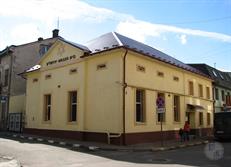 |
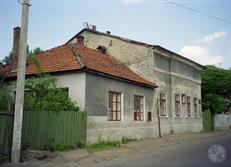 |
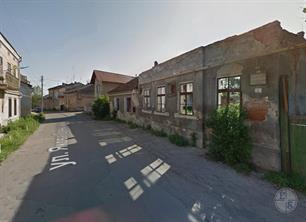 |
| Jerusalem Synagogue, 2013. St. Pekarskaya, 3 | Oziopol Synagogue, 1997. St. Oorensteina, 8 | As of 2015, it is practically destroyed |
In the First World War from 1915 to 1917, Russia occupied the city. The Jewish population was brought to poverty, many died in the pogroms, the synagogues were defiled and looted. The revolutionary events of 1917 forced the Russian troops to move back.
On November 1, 1918, the Austrian administration transferred power to Ukrainians and in Lviv proclaimed the West-Ukrainian Republic. The chairman of the Kolomyia Kagal E. Rotenstreich on behalf of the community announced cooperation with the new authorities. For coordination of the authorities, district councils were created, they included representatives of the Jewish, Polish and German population.
To protect the population from looting and robberies, a Jewish police was formed in the system of the Kolomyia district military team. In Lviv, a brigade of the Sichi Sagittarius under the command of the Austrian Colonel F. Tinkel was sent to the fight against Polish troops, and the Jewish community equipped them with ammunition, food, carts, horses, fodder, as well as fuel and lubricants.
On November 1, 1918, the Austrian administration transferred power to Ukrainians and in Lviv proclaimed the West-Ukrainian Republic. The chairman of the Kolomyia Kagal E. Rotenstreich on behalf of the community announced cooperation with the new authorities. For coordination of the authorities, district councils were created, they included representatives of the Jewish, Polish and German population.
To protect the population from looting and robberies, a Jewish police was formed in the system of the Kolomyia district military team. In Lviv, a brigade of the Sichi Sagittarius under the command of the Austrian Colonel F. Tinkel was sent to the fight against Polish troops, and the Jewish community equipped them with ammunition, food, carts, horses, fodder, as well as fuel and lubricants.
On July 3, 1941, the city was occupied by the Hungarian troops. The Hungarian military commandant of Kolomyya did not allow Ukrainian nationalists to make a massive execution of Jews, but numerous anti -Jewish restrictions were introduced, including the obligatory wearing of a distinctive sign, restriction of movement, confiscation of property, sending Jews to heavy forced labor.
In early August 1941, the city passed under the control of the German military administration. The position of the Jews worsened. Jews were forced to pay the invading authorities to indemnity with money and valuable things. Judenrat was created under the leadership of M. Gorowitsa.
On October 12, 1941, German troops and Ukrainian police arrested about three thousand Jews, who were imprisoned and a few days later were shot in the grove near the village of Shepanivtsy.
On November 6, the action was repeated. On December 23, as a result of the provocation of the Gestapo, about a thousand Jews - owners of foreign passports were collected; They were shot on the site of previous executions.
In March 1942, three ghetto were created, in which about 18 thousand Jews of Kolomyya and neighboring settlements were enclosed. In April, about 5,000 Jews, and in September -
About 7,000 were deported to the Belzhets destruction camp. The head of Judenrat M. Gorovitz in the fall of 1942 committed suicide.
On January 20, 1943, the remaining 2,000 Jews were concentrated in several houses, and on February 2, 1943 they were shot.
In early August 1941, the city passed under the control of the German military administration. The position of the Jews worsened. Jews were forced to pay the invading authorities to indemnity with money and valuable things. Judenrat was created under the leadership of M. Gorowitsa.
On October 12, 1941, German troops and Ukrainian police arrested about three thousand Jews, who were imprisoned and a few days later were shot in the grove near the village of Shepanivtsy.
On November 6, the action was repeated. On December 23, as a result of the provocation of the Gestapo, about a thousand Jews - owners of foreign passports were collected; They were shot on the site of previous executions.
In March 1942, three ghetto were created, in which about 18 thousand Jews of Kolomyya and neighboring settlements were enclosed. In April, about 5,000 Jews, and in September -
About 7,000 were deported to the Belzhets destruction camp. The head of Judenrat M. Gorovitz in the fall of 1942 committed suicide.
On January 20, 1943, the remaining 2,000 Jews were concentrated in several houses, and on February 2, 1943 they were shot.
In August 1944, after the liberation of Kolomyya by the Soviet Army, there were only a few Jews in the city, who were joined by the evacuation, and later mobilized and voluntarily departed to the Soviet army. Soon, most of them left for Poland, and from there to the United States and other countries, including Israel.
In Israel and New York there are lands from Kolomyya.
In 1969, about 350 Jews lived in Kolomyya. In the early 2000s. No more than a few dozen Jews lived in Kolomyia, a Jewish community functioned.
In 1992, after the collapse of the USSR, the Jewish community revived its legal status, and in 1997 the City Council handed it over to the synagogue "Jerushalaim".
During the demolition of the monument to Lenin, it was discovered that the foundation for him was Jewish tombstones.
In Israel and New York there are lands from Kolomyya.
In 1969, about 350 Jews lived in Kolomyya. In the early 2000s. No more than a few dozen Jews lived in Kolomyia, a Jewish community functioned.
In 1992, after the collapse of the USSR, the Jewish community revived its legal status, and in 1997 the City Council handed it over to the synagogue "Jerushalaim".
During the demolition of the monument to Lenin, it was discovered that the foundation for him was Jewish tombstones.
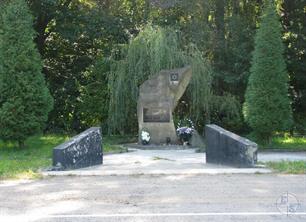 |
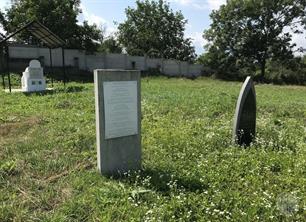 |
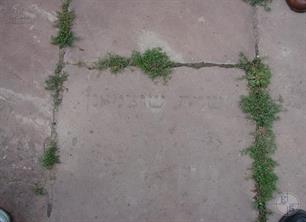 |
| Holocaust Memorial in the forest in Sheparivtsi near Kolomyya, 2007 | Holocaust memorial in the Oldest Jewish cemetery, 2019 | Jewish tombstone in the courtyard of former Gestapo office, 2007 |
In May 1919, the Romanian troops were occupied by Kolomyya, but already in August Galica again retreated to the protectorate of Poland. The public life of the Jewish population and relations with the authorities were still coordinated by Israeli Gmina, led by its commissioner Dr. Leon Flystein, his deputy Avroom-Schmuel Geller and Rabbi Assistant Osinas Siebler.
The leadership of the community tried to use a variety of commercial structures and entrepreneurs to provide assistance to poor Jews. The city of Jewish merchants, doctors, lawyers and scientists acted in the city.
In 1930, the last rabbi of the city of Yosef Lau, who died during the fascist occupation in 1942, was elected according to the recommendations of Kagal and the Aguas Isroel party.
In September 1939, under an agreement between the USSR and Germany, the Red Army occupied Western Ukraine and its lands were annexed to the Ukrainian SSR. At the same time, enterprises and a trading network were nationalized, synagogues and Jewish schools were closed. Flessed regimen was referred to Siberia.
Before the start of World War II, the population of the city was 45,000, of which 19 350 were Jews, not counting Jewish refugees from Poland, Austria, Hungary, Czechoslovakia.
The leadership of the community tried to use a variety of commercial structures and entrepreneurs to provide assistance to poor Jews. The city of Jewish merchants, doctors, lawyers and scientists acted in the city.
In 1930, the last rabbi of the city of Yosef Lau, who died during the fascist occupation in 1942, was elected according to the recommendations of Kagal and the Aguas Isroel party.
In September 1939, under an agreement between the USSR and Germany, the Red Army occupied Western Ukraine and its lands were annexed to the Ukrainian SSR. At the same time, enterprises and a trading network were nationalized, synagogues and Jewish schools were closed. Flessed regimen was referred to Siberia.
Before the start of World War II, the population of the city was 45,000, of which 19 350 were Jews, not counting Jewish refugees from Poland, Austria, Hungary, Czechoslovakia.

- Home
- Shtetls
- Vinnytsia region
- Volyn region
- Dnipro region
- Donetsk region
- Zhytomyr region
- Zakarpattia region
- Zaporizhzhia region
- Ivano-Frankivsk region
- Kyiv region
- Kropyvnytskyi region
- Luhansk region
- Lviv region
- Mykolayiv region
- Odessa region
- Poltava region
- Rivne region
- Sumy region
- Ternopil region
- Kharkiv region
- Kherson region
- Khmelnytskyi region
- Chernihiv region
- Chernivtsi region
- Cherkasy region
- Crimea
- Synagogues
- Cemeteries
- Objects & guides
- Old photos
- History
- Contact
Jewish towns of Ukraine
Jewish towns of Ukraine
My shtetl
My shtetl
Donate
